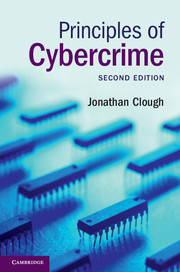Book contents
- Frontmatter
- Contents
- Preface
- Acknowledgements
- Table of Legislation
- Table of Cases
- List of abbreviations
- Part I Introduction
- Part II Computer as target
- Part III Fraud and related offences
- Part IV Content-related offences
- 10 Child pornography
- Part V Offences against the person
- Part VI Jurisdiction
- Bibliography
- Index
10 - Child pornography
from Part IV - Content-related offences
Published online by Cambridge University Press: 05 October 2015
- Frontmatter
- Contents
- Preface
- Acknowledgements
- Table of Legislation
- Table of Cases
- List of abbreviations
- Part I Introduction
- Part II Computer as target
- Part III Fraud and related offences
- Part IV Content-related offences
- 10 Child pornography
- Part V Offences against the person
- Part VI Jurisdiction
- Bibliography
- Index
Summary
Child abuse online
In pre-Internet days, individuals who wished to view this kind of material would need to seek it out, bring it into their home or have it delivered in physical form as magazines, videos, photographs etc., risking discovery and embarrassment at every stage. Now they are able to access it from their computers at home (or from their place of work) with relative ease.
Perhaps the most tragic aspect of the internet and the proliferation of digital technology has been their ability to facilitate the production and distribution of child pornography and other forms of child sexual abuse. Prior to the advent of these technologies, such material was difficult to transport without detection, production was hampered by the need to have film processed, and equipment was costly and relatively difficult to use. As digital technology has become more widely available, and the internet more pervasive, there has been a corresponding rise in the number of child pornography prosecutions. While this is explained in part by changing priorities of law enforcement agencies, this is itself undoubtedly a response to the proliferation of child pornography on the internet, and increasing access to technology through which to access, produce and distribute such material.
Paedophiles have long seen the potential for new technologies to be used in the production and distribution of child pornography. As early as 1986, the US Attorney General's ‘Commission on Pornography’ noted that computer networks were being used by paedophiles for establishing contacts and exchanging information, and recommended that specific legislation be enacted to prohibit such activity. In 1995, an Australian Parliamentary Committee noted the potential for computers to replace postal services and personal contacts as the main means of distribution for child pornography, but found that ‘[s]o far, there appears to be no firm evidence that computers are being used to this extent’.
Since the advent of the modern internet in the 1990s, that situation has changed dramatically. Between 1996 and 2005 there was a 2,026 per cent increase in the number of cases opened throughout the FBI as part of the ‘Innocent Images National Initiative’. The UK experience has been similar, with the number of prosecutions involving indecent photographs of children increasing from 93 in 1994 to 1,890 in 2003.
- Type
- Chapter
- Information
- Principles of Cybercrime , pp. 289 - 374Publisher: Cambridge University PressPrint publication year: 2015



